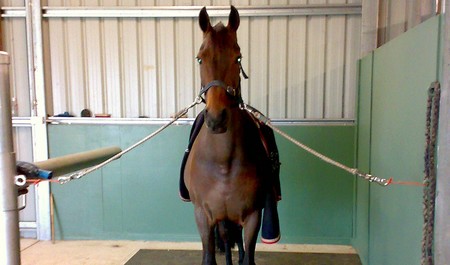Lesson of the Day: Don't Drink & Ride
- Beattie is injured after she falls to the ground when her neighbor's (Mickalich) horse spooks and rears.
- Beattie is suing Mickalich for her injury, alleging that this is an exception to the limitations on liability provided by the EALA based on Mickalich's "negligence".
- According to the Amicus Curiae Brief of Michigan Horse Council, Beattie was not only a previous horse owner herself (proof that she should have been aware of the inherent risks associated with horses), but had also ridden several of Mickalich's horses in the past. Beattie also admitted to having had a "couple" beers before going to Mickalich's house.
- As a previous horse owner, Beattie should have been aware of the "inherent risks" of any equine activity, and if she really believed that the horse should have been cross-tied, then she shouldn't have accepted the lead rope in the first place or at least voiced her concerns at that point.
- Cross-ties are not the ultimate answer here. In fact, many horses will have a stronger reaction with the cross ties than being held by a simple lead rope. When a horse that is cross-tied spooks and pulls back, the cross-ties pull back at the horse, causing the natural flight reaction (see above image of a cross-tied horse from eHOW.com) to go into effect.
- Cross-ties cannot prevent many of the other horse-related risks, such as biting or kicking. Must we now tie down, muzzle, hobble and sedate our horses every time a visitor wants to approach? Just as with sex and alcohol, there is only one way to ensure your safety around these powerful and sometimes unpredictable animals - ABSTINENCE!

Labels: Equine News, Funny Horse Stuff, Riding
 RSS
RSS





0 Comments:
Post a Comment
Subscribe to Post Comments [Atom]
<< Home